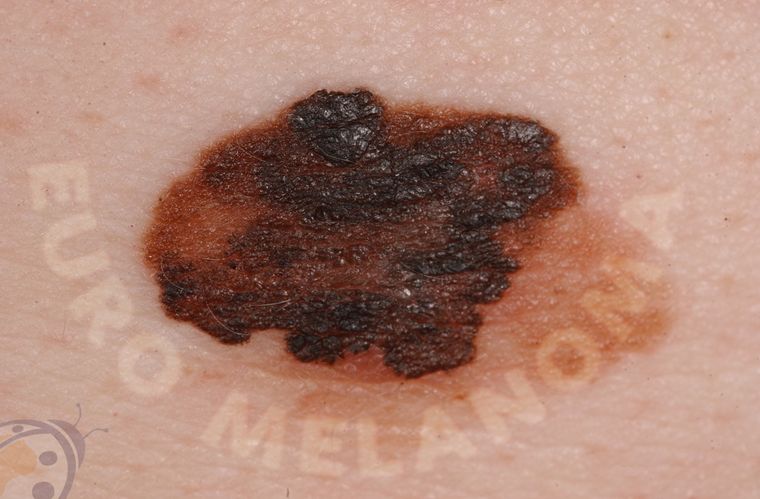Melanoma
Escolha outro tipo de cancro
É o tipo de tumor menos frequente, mas o mais perigoso. Pode afetar pessoas de qualquer idade, ao contrário dos carcinomas anteriores que são mais comuns em pessoas mais idosas. Variam muito de aspeto, podendo apresentar-se como uma lesão pigmentada que vai escurecendo, desenvolvendo contornos irregulares ou cores variadas, ao longo do tempo, ou como um nódulo rosa ou vermelho. Pode espalhar-se internamente. Requer tratamento imediato.

Appearance
Melanomas present as either spots that are darkly pigmented or develop irregular edges or different colours over time, or as rapidly-growing pink or red lumps. Melanomas are not easy to identify at first glance, as they often appear similar to other moles or birthmarks.
The ABCDE rule is a useful way to identify potential melanomas on the body:
- Is the mole Asymmetric?
- Does it have indistinct or uneven Borders?
- Does it change Colour?
- Is it larger than 6mm in Diameter?
- Has its size, shape or behaviour Evolved over time?
All moles should look fairly similar; the same shape and colours. If a new lesion appears that is different form the rest, it may be suspicious. This is called the ‘Ugly Ducking’ sign.
Symptoms such as itching or bleeding of a lesion are hallmark signs of malignant melanomas. The appearance of any new lesion on previously unaffected skin in people over the age of 40 is also a suspicious sign, and should result in checks with a dermatologist.
Location
Melanomas can occur anywhere on the body, but are most commonly found on the chest and legs. They can grow on previously unblemished skin, but in approximately 30% of cases they appear on the site of existing moles.
Evolution
Melanomas may grow quickly, and can spread to internal organs rapidly. Because of this, immediate treatment is required, most often in the form of surgical excision.

































